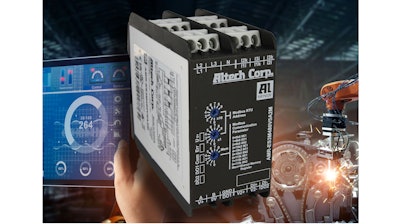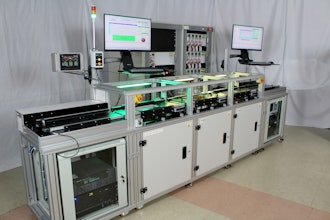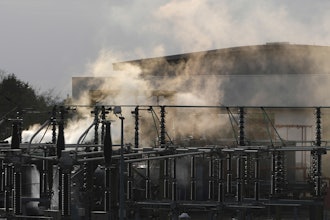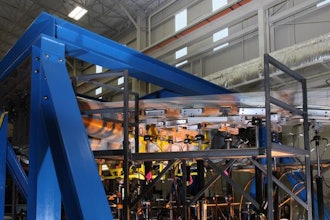
In today's competitive industrial landscape, energy efficiency isn't just a goal — it's a necessity. With rising energy costs and increasing pressures to reduce carbon footprints, manufacturers are turning to advanced energy monitoring solutions to provide visibility into energy usage and meet sustainability goals.
Yet, beyond the obvious environmental benefits, there are also significant tangible performance and cost implications associated with energy monitoring systems. For example, by monitoring and measuring parameters such as reactive power and power factor, these systems enable companies to optimize energy consumption, improve equipment performance, and reduce maintenance.
While sophisticated energy monitoring solutions have traditionally been cost-prohibitive for many operations, recent innovations are bridging this gap. New solutions offer an accessible middle ground that brings powerful energy monitoring capabilities to legacy systems through Modbus connectivity. This democratization of energy monitoring technology means that businesses of all sizes can now implement systems that were once reserved for those with substantial capital investment capabilities.
These more accessible monitoring solutions feature integration flexibility and straightforward installation, making them ideal for diverse industrial settings and unlocking new capabilities in older equipment without extensive retrofitting.
Here's how these readily deployable energy monitoring systems are transforming energy from a fixed expense to a dynamic variable ripe for optimization.
Sustainability Advantages of Energy Monitoring
Understanding how automated systems consume energy makes energy management a critical concern for operational sustainability and cost control. Energy monitoring systems provide the visibility and control necessary to optimize these automated processes, ensuring they operate at peak efficiency without unnecessary energy waste. With the increasing global emphasis on sustainability, these technologies also provide the data and insights needed to make informed decisions about energy usage and conservation strategies.
For example, energy monitoring systems like the Alsense Energy Monitor enable manufacturers to track their energy consumption in real time, identifying areas of waste and opportunities for reduction. Such visibility into energy consumption patterns makes it easier to develop targeted strategies to reduce overall energy usage and the associated carbon emissions.
Energy monitoring systems also play a vital role in ensuring compliance with increasingly strict energy regulations. The Alsense monitor's accurate measurement capabilities — with a base accuracy of ≤0.15% for voltage and ≤0.25% for current — help facility managers track and record electricity consumption to meet regulatory requirements and align with global sustainability standards.
Examples might include:
- Energy efficiency standards that require reporting of energy consumption.
- Demand response programs that require detailed power usage data.
- ISO 50001 energy management system standard implementation.
- Carbon reduction initiatives that require baseline energy data.
Performance Advantages of Energy Monitoring
In addition to their sustainability benefits, energy monitoring systems provide performance advantages thanks to their ability to enhance operational efficiency. With comprehensive measurement capabilities for voltage, current, active and reactive power, and power factor, these systems allow facilities to:
- Improve their power quality
- Optimize reactive power
- Correct power factor
The result is that your plant will run more efficiently at lower costs. Let's take a closer look at these three examples.
 The Alense Energy Monitor complements Altech's comprehensive lineup of relays that meet the needs of various industrial applications.Altech
The Alense Energy Monitor complements Altech's comprehensive lineup of relays that meet the needs of various industrial applications.Altech
Improving Power Quality
Energy monitoring provides a critical foundation for detecting and mitigating power quality issues that affect industrial machine performance. This data allows manufacturers to detect voltage sags, swells, harmonics and other problematic events, which, if left unchecked, can affect equipment performance.
For example, by tracking and analyzing various electrical parameters like voltage and current, the Alsense system helps plant managers identify inefficiencies and anomalies like harmonics and transient events. If left unchecked, harmonics can cause equipment overheating, nuisance tripping and premature component failure, while transient events, which often go unnoticed, can impact machine lifespan and reliability.
The Alsense system's real-time monitoring capabilities provide visibility into the correlation between these events and machine performance issues, empowering operators to identify problematic equipment and take strategic steps to avoid more damaging consequences.
Optimizing Reactive Power
A second example involves reactive power, which plays an important role in maintaining voltage stability in electrical systems. The Alsense monitor's ability to measure reactive power is essential for ensuring proper voltage levels throughout an industrial facility.
Reactive power requires careful optimization: having too little can cause voltage drops, leading to equipment malfunctions or failures, while excessive reactive power can create overvoltage conditions that damage equipment. By monitoring and optimizing reactive power levels, the Alsense system helps manufacturers maintain ideal voltage conditions, ensuring reliable equipment performance and preventing production disruptions.
Reactive power management can also extend the lifespan of industrial equipment by preventing overheating and reducing wear and tear. Excessive reactive power can lead to higher currents and overheating, damaging transformers and motors. By ensuring that equipment operates within optimal parameters, reactive power monitoring helps decrease maintenance costs and prolong service life. The resulting reduction in replacement and repair costs represents a significant long-term financial benefit for industrial operations.
Power Factor Correction and Cost Benefits
By helping plant owners optimize energy consumption and minimize waste, energy monitoring systems unlock significant cost benefits while extending equipment lifespan. A low power factor, which is common with inductive loads like motors and transformers, significantly impacts both operational expenses and equipment reliability.
For manufacturers, a poor power factor creates multiple challenges, including higher electricity bills, utility company penalties and greater equipment strain. When power factor is low, motors and transformers generate excessive reactive power, burdening the power supply system. This, in turn, leads to voltage fluctuations and harmonic distortions that accelerate equipment wear and tear, causing premature component failure and increasing maintenance costs.
By measuring power factor, the Alsense system allows manufacturers to identify problem areas across three-phase systems. By detecting which equipment or processes contribute to power factor issues, facility managers can implement targeted correction measures, thus reducing electricity costs, enhancing power supply stability and extending equipment life.
In addition to power factor correction, another potential area of cost savings involves demand charges based on peak power usage. By monitoring power consumption in real-time, energy monitoring systems enable facilities to manage their demand more effectively and reduce charges.
Users can configure the monitor's digital outputs to implement load-shedding strategies during peak demand periods, automatically turning off non-essential equipment to keep peak demand below threshold levels.
This capability can unlock significant cost savings since demand charges often make up a large portion of industrial electricity bills.
 Users can configure the monitor's digital outputs to implement load-shedding strategies during peak demand periods, automatically turning off non-essential equipment to keep peak demand below threshold levels.Altech
Users can configure the monitor's digital outputs to implement load-shedding strategies during peak demand periods, automatically turning off non-essential equipment to keep peak demand below threshold levels.Altech























